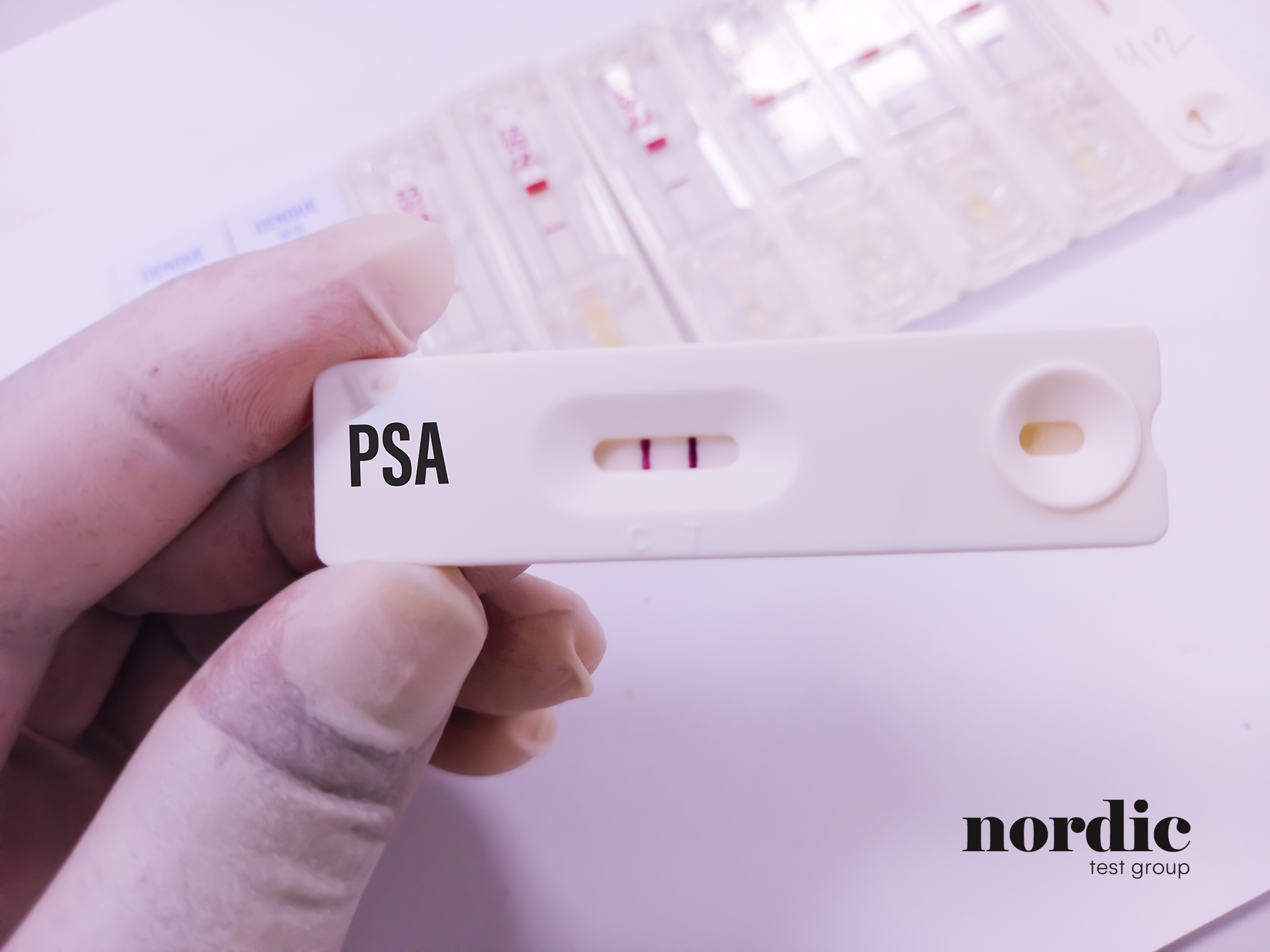Self-Examination of the Prostate: A Guide for Men
Published 2023-11-27 22:52 by Nordictest
Self-examination of the prostate, also known as prostate self-check, is an essential part of maintaining good health for men. In this article, we will walk you through step-by-step on how to perform a prostate self-check. We will also discuss why it is important, when you should start doing it, and what you should pay attention to during the process.
Why Is It Important to Check Your Prostate Yourself?
The prostate is a small gland found in men located just below the bladder. Its primary function is to produce a portion of the seminal fluid that carries sperm. With age, the prostate gland can enlarge and cause issues such as difficulty urinating or pain. Additionally, prostate cancer, one of the most common cancers in men, can also develop.
Early detection of prostate cancer is crucial for successful treatment. By regularly performing a prostate self-check, you can become more aware of any changes or irregularities and seek medical help in a timely manner if needed.

When Should You Begin Checking Your Prostate?
There is no exact age at which you should start checking your prostate, but it is common to recommend that men begin at the age of 50. If you have a family history of prostate cancer or other risk factors such as smoking or obesity, your doctor may recommend starting earlier, typically at age 40 or 45.
How Do You Perform a Prostate Self-Check?
Performing a prostate self-check involves two main methods: the Digital Rectal Examination (DRE) and the Prostate-Specific Antigen (PSA) test. Here are the steps to perform both methods:
Digital Rectal Examination (DRE):
- Thoroughly wash your hands and use a latex glove if possible to reduce the risk of infection.
- Lie on your side with bent knees or stand with bent knees and lean forward over a surface like a bed or a table.
- Apply a water-based lubricant to your index finger and the anus opening to facilitate insertion.
- Gently insert your index finger into the rectum about two to three inches and feel for any irregular or hard areas on the prostate gland. The prostate should feel like a soft and elastic sphere.
Prostate-Specific Antigen (PSA) Test:
- This is a blood test that measures the level of PSA in your blood. PSA is a protein produced by the prostate gland, and elevated levels can indicate issues such as prostate cancer or inflammation.
- If you wish to purchase a PSA test, we offer a home lab test that is then analyzed in a laboratory.

What Should You Pay Attention to During the Prostate Self-Check?
When performing a Digital Rectal Examination (DRE), it is essential to be attentive to the following:
- Feel for lumps, hard areas, or irregularities on the prostate gland.
- Take note if you experience any pain or discomfort during the examination.
- If you detect any abnormal changes or have any concerns, contact your doctor immediately for further evaluation and discussion of appropriate next steps.
Summary
Self-examination of the prostate is a crucial part of maintaining good health for men, especially considering the risk of prostate cancer and other prostate-related issues. By following the above steps and regularly checking your prostate, you can become more aware of your health and, when necessary, seek medical help in a timely manner. Remember to discuss your family history and other risk factors with your doctor to determine the best time to start these checks. Your doctor can also provide guidance on how often to repeat them and whether other tests or evaluations are necessary. So, take control of your health by regularly checking your prostate yourself and being proactive with your care.
